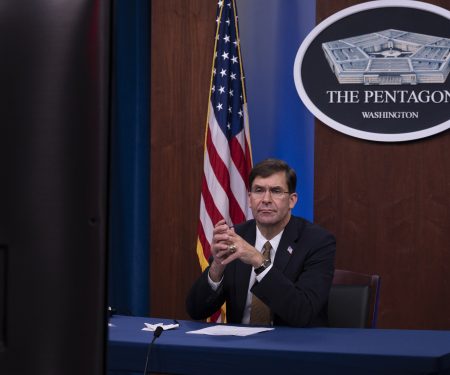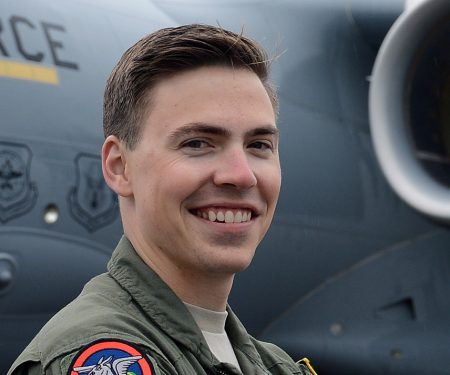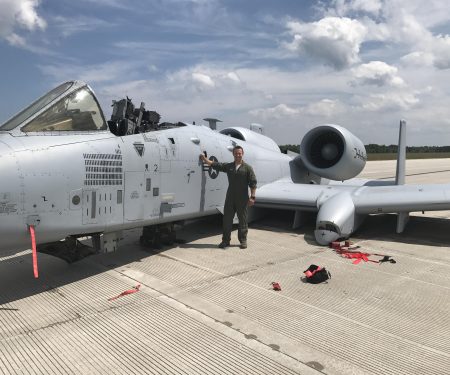Radar Sweep
Snapshot: DOD and COVID-19
Here's a look at how the Defense Department is being impacted by and responding to the COVID-19 pandemic.
Report: VA Hospitals May Be Using Faulty Temperature Sensors for Coronavirus Fever Checks
Numerous Veterans Affairs Department medical centers may be using faulty temperature screening devices that could miss signs of coronavirus infection among visitors, according to a new report from video surveillance experts released Nov. 9.
Air Force Turns to Machine Learning to Fight COVID-19 Disinformation
Just as the technology can be used to help deliberately spread falsities online, it can also be tapped to stop that spread.
Esper, on His Way Out, Says He Was No Yes Man
Speaking to Military Times in an exclusive interview on Nov. 4, ousted Defense Secretary Mark T. Esper confirmed that he never had any intention of quitting, and though he expected the other shoe to drop, he didn’t have a good read on when.
USAF Researching Lasers to Assist Aerial Surveillance Ops in National Capital Region
The Air Force is beginning market research into laser projection solutions that can assist the military's Enhanced Regional Situational Awareness system that defends the National Capital Region's airspace. ERSA uses a network of visual and infrared cameras to monitor aircraft flying in Washington, D.C., and surrounding areas. If a plane unexpectedly enters controlled airspace in error, the system's lasers will generate a visual warning signal to the aircrew.
Why an Air Force 6th-Gen Stealth Fighter is Here Almost 10 Years Early
America’s mysterious sixth-generation stealth fighter has taken to the skies, as much as five to 10 years before it may have been anticipated. How could this have happened? One clear and lesser-known reality related to this can be found through the fast-evolving process of digital engineering wherein actual prototype models, design renderings and technology specifics can be replicated, tested and analyzed before there is any “bending of metal.” This process, clearly and simply put, massively helped bring the sixth-generation stealth fighter to life.
OPINION: How Fast Is Fast Enough? A Role for Supersonic Munitions in Standoff Strike
“The Department of Defense is developing a ‘high-low’ mix of exquisite, expensive hypersonic weapons and slower subsonic munitions despite the likelihood that future combat operations against high-technology adversaries will be munitions-intensive and, therefore, costly,” writes David N. Zikusoka, a research fellow at the Center for Strategic and Budgetary Assessments. “An essential question—one that could deliver more options for decision-makers, enhance strategic stability, and even reduce overall costs—has been neglected: How fast is fast enough?”
SpaceX Explains Why the U.S. Space Force Is Paying $316 Million for a Single Launch
SpaceX President and Chief Operating Officer Gwynne Shotwell on Nov. 9 explained that the contract not only pays for launch services, but also covers expenses for infrastructure and other items required for national security launches.
Military Carrier Pigeon Message Turns Up 110 Years after It Was Sent
Found in a field in mid-September by a couple out hiking in Ingersheim, northeastern France, the message was sent from one German military officer to another in 1910, when the area was still part of Germany, according to Dominique Jardy, curator of the nearby Linge Memorial museum. Jardy told CNN the message was folded up inside a small aluminum capsule and the script is difficult to decipher.





